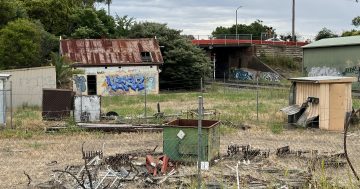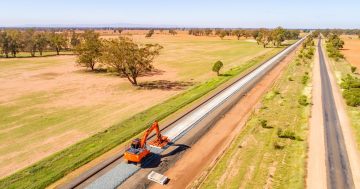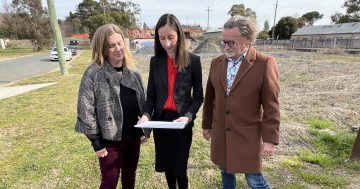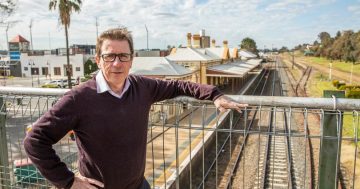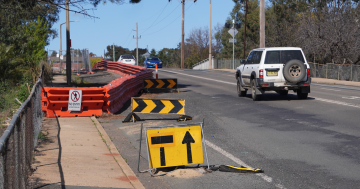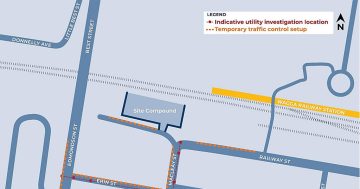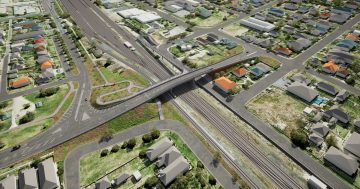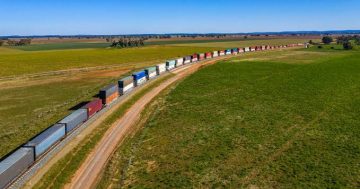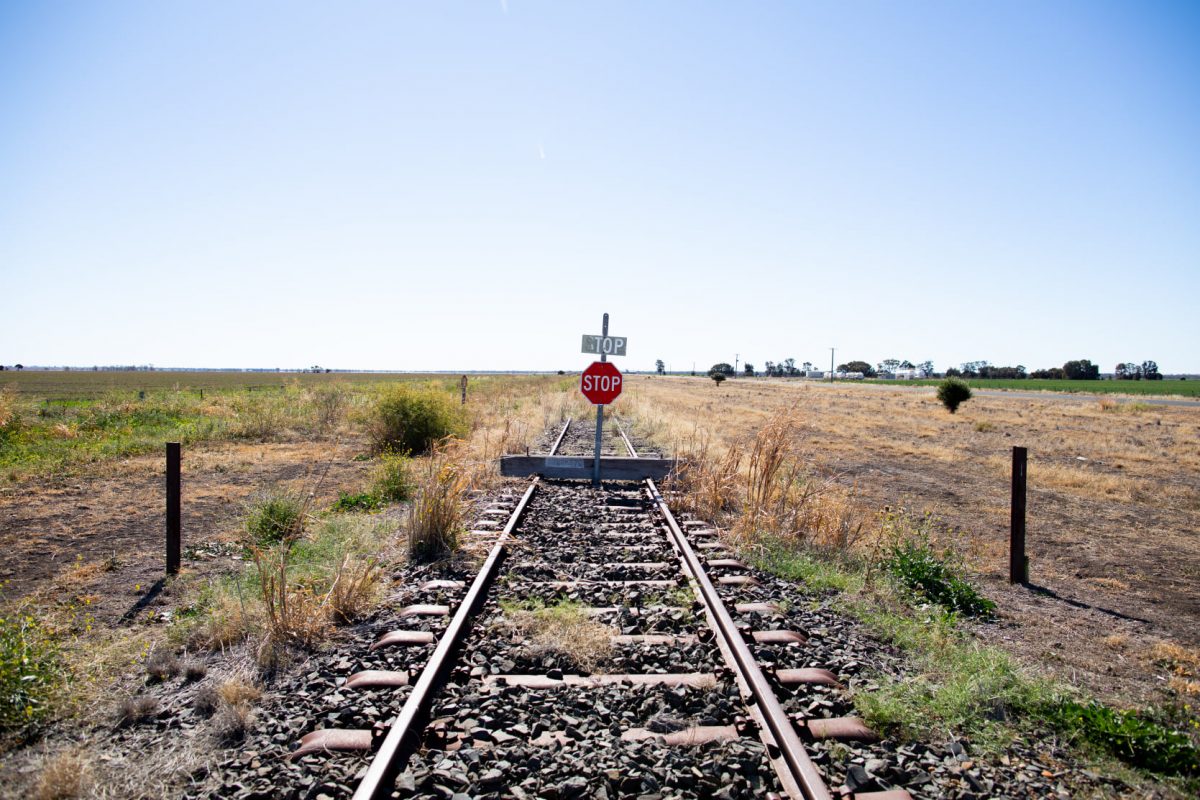
Wagga City Council has placed concerns over the Inland Rail’s passage through the city at the top of the agenda. Photo: Inland Rail.
Wagga Wagga City Council has put the multibillion-dollar Inland Rail project at the top of the agenda as the deadline for community feedback approaches.
“The Inland Rail is so important for the future of Wagga, I think we all recognise that,” said Councillor Amelia Parkins at last night’s meeting (19 September).
“But we’ve got to get it right. It really is once in a lifetime.
“It’s exciting, but it’s also terrifying.”
In a document released on the weekend, the council affirmed its broad support for the project but outlined “fundamental problems with the accuracy and completeness of the assessment” in the Australian Rail Track Corporation’s (ARTC) Environmental Impact Statement (EIS) for the Albury to Illabo section.
With Mayor Dallas Tout currently in Germany, Deputy Mayor Jenny McKinnon put the issue forward in the Mayoral Minute.
“Submissions on the Environmental Impact Statement close on the 28th of September – that’s just a couple of weeks away,” Cr McKinnon said.
“So it’s critical that the community is informed of the council’s considered opinion.”
The council’s response outlines seven key concerns, suggesting that the scope of the EIS is too limited and that the council should be further consulted on issues impacting the community.
The council contends that while the ARTC’s report examines the impact on particular “areas of enhancement” where modifications will be required to facilitate double-stacked container trains, it has not included the broader implications of larger, longer and more frequent trains on the entirety of the section.
“WWCC believes the impacts of IR, mainly operational, have potential to trigger significant adverse impacts on the community of Wagga Wagga, local businesses and services,” reads the response.
The council has questioned the “inadequate” consideration of noise, vibration, traffic flow and flooding.
While alternative routes have been included in the assessments of other portions of the railway corridor, no such considerations have been included for Albury and Illabo where the existing Main Southern Railway will be used and upgraded.
“This infrastructure build is an upgrade and increase of the usage of existing infrastructure and as such should be treated as a whole-of-corridor upgrade,” said Cr Rod Kendall.
“The EIS should look at the impacts of the project on the whole of the area.
“If the outcome from that upgraded EIS is that there should be a shift in the corridor alignment or the like, then so be it.”
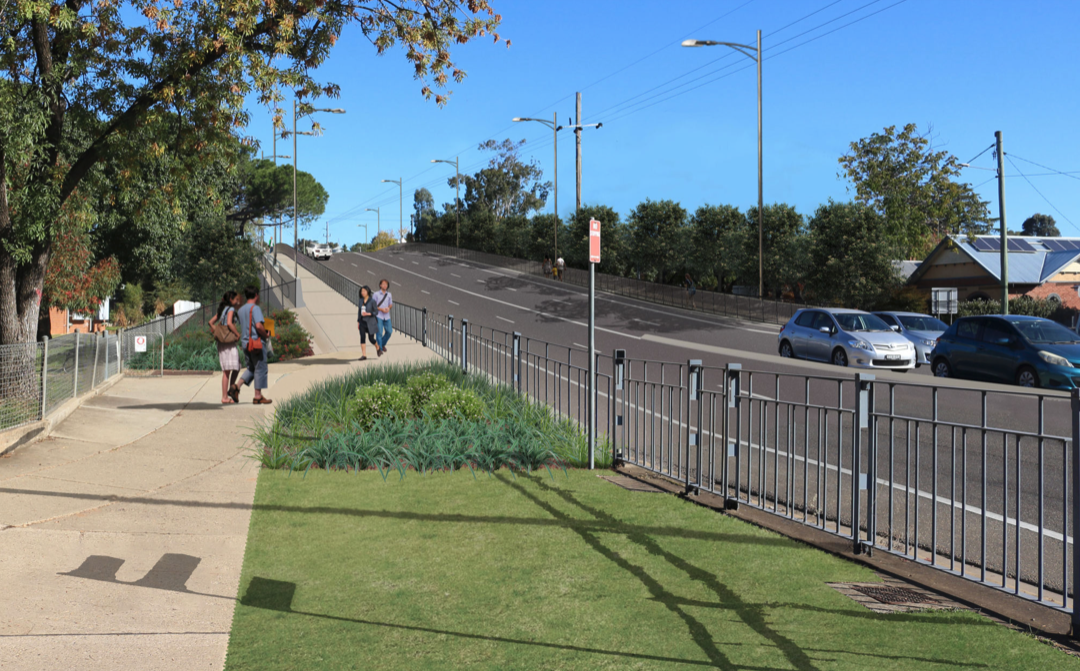
The proposed upgrade to the Edmondson Street bridge will include raising it 2.8 metres. Photo: ARTC.
Cr Dan Hayes suggested that ARTC had engaged in “sophistry” by claiming that the viability of alternative routes had already been explored in a previous study.
After examining the documents in question, he concluded that “this is just plain wrong”.
“Bypassing the city centre was never considered and has never been evaluated and those documents are then being used as confirmation that it was already looked at,” he explained.
“I think it’s some borderline untruth that has been used consistently by ARTC to say that it’s already been looked at and evaluated and it hasn’t.”
Cr McKinnon said there was also community confusion over the project’s details.
“Some people think that this is actually a passenger service. Some think it’s the very fast train, and they think it would be a terrible shame if we didn’t have this coming through the centre of town,” she said.
“In fact, it is just a freight service and it’s very important to correctly assess and address all the impacts of the Inland Rail.
“Because there’s no recourse, as far as we can tell, of any additional expenditure once the Inland Rail has been completed.”
Adam Drummond from the Committee 4 Wagga said that while the group fundamentally supported the notion of the Inland Rail and the economic benefits it would bring, members also wanted to ensure that community impacts were properly taken into account.
“A lot of those concerns are in the submission from Wagga City Council and we’re certainly looking at some of those fundamental issues that will have impacts on business and traffic flow and livability for the city,” Mr Drummond said.
“We’ll be looking at those reports and working with other associations closely before we give our final endorsement of an EIS response.”
Chris Roche from the Wagga Residents and Ratepayers Association backed the council’s response and said both the changes and construction period would have a negative impact.
“The one thing we do suggest to council is that they also consider the option of a bypass around the Wagga centre and that’s what we’re pushing,” Mr Roche said.
“If we spend the money up front, the long-term impacts are a lot better when compared to devaluing all the properties and the potential damage to those properties through vibration and noise.”
Mr Roche cited a recent case in Narromine where community feedback was taken on board and the track was redirected.
“In Narromine they had 80 submissions about the EIS and they got a bypass,” he said.
Cr Richard Foley also cited the Narromine case at last night’s council meeting and said it was vital that community members took the opportunity to examine the report and deliver feedback before the 28 September deadline.
“The general community needs to access [the council response] to write their own submissions – not to copy and paste – but in their own words so it’s not frivolous and submissions are taken seriously,” he said.
Wagga Wagga City Council’s Inland Rail A21 EIS response can be read here.







